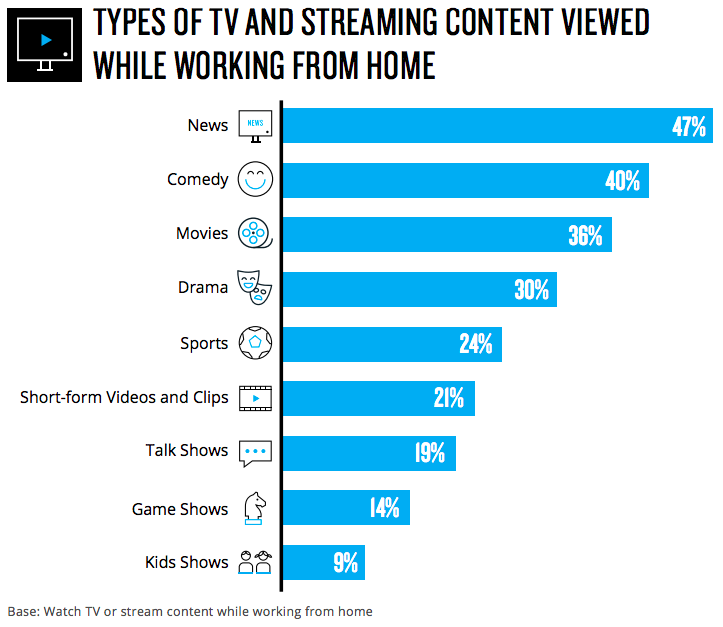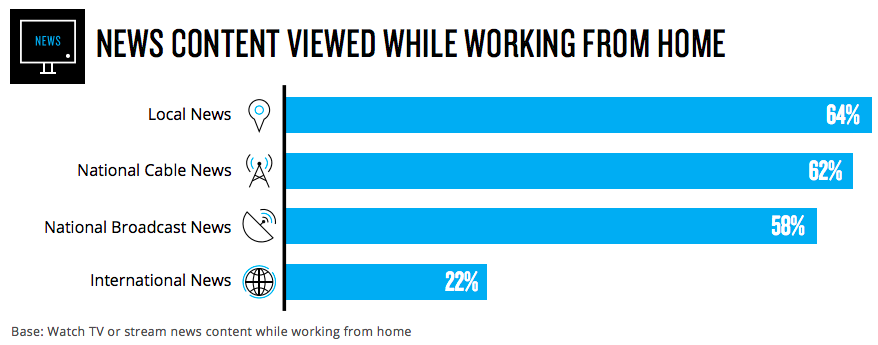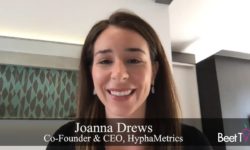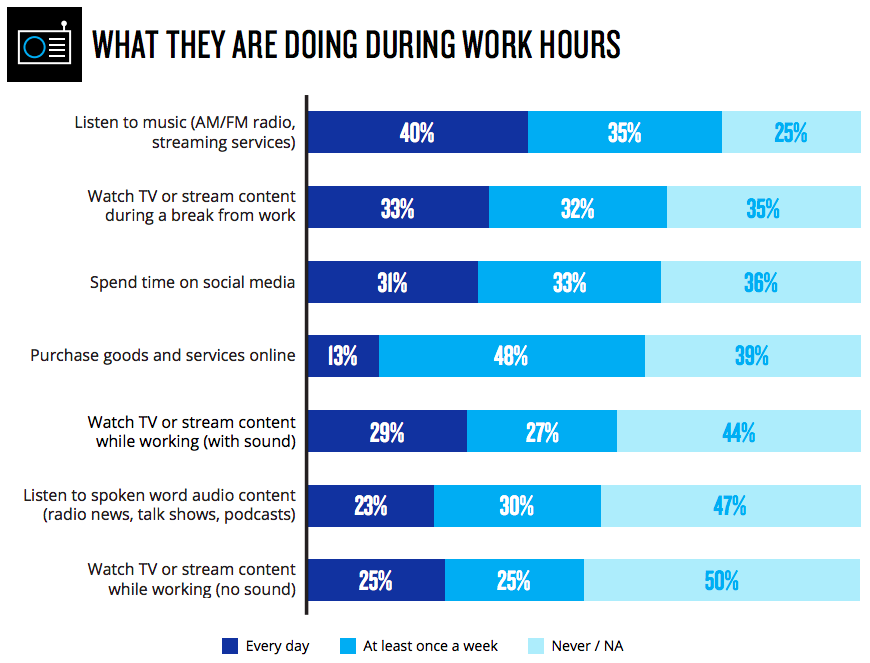Music and news are the media formats to capture the day-times of a new generation of homeworkers during the COVID-19 pandemic, according to research from Nielsen.
And the company thinks the reduction in commuting is driving an increased interest in local news.
That may come as a relief to the many local publishers and broadcasters that have struggled to gain audience attention in an increasingly crowded media universe in recent years – though it may make their recent decline in ad revenue harder to swallow.
WFH OK
Findings of Nielsen’s Remote Workers Consumer Survey, a survey of 1,000 adults who worked from home prior to and during the novel coronavirus outbreak, are published in its Total Audience Report, alongside a panel study and a Scarborough survey using the company’s Total Media Fusion methodology. They show:
- New homeworkers spend less time using media than traditional homeworkers.
- A larger share of that media time is via digital and connected TV devices.
- 72% of new work-from-home respondents have maintained or increased their productivity.
- 50% want homeworking options as COVID-19 restrictions are lifted.
- 80% would now prefer to work for a company that afford choice of work location.
Music and news win the day
So, what does the new media time look like? The data shows most people listen to music during their work time, but a majority also watches or streams TV during breaks.
News leads the categories when homeworkers do watch TV or video.

And local news is the category most respondents said they watch.

According to the report: “Local news is being embraced more than ever, both on
TV and through AM/FM radio and podcasts.” It says: “Quarantine restricts our movement and puts a newfound focus on our immediate surroundings”
It did not offer data from prior years to back up the claim that local news is “being embraced more than ever“.
However, an April recent survey by Horowitz Research found 58% of US consumers are consuming more local news during the pandemic than before, 38% of them were not even doing so at all prior to the crisis.
Local is back
“Established behaviours people had had shifted as they started working from home,” says Peter Katsingris, Nielsen SVP of audience insights, in this video interview with Beet.TV.
“Local news was something that popped within our survey, as people were exposed to this work-from-home living and how it gave them more choice.
“As people are uprooting themselves, maybe from city areas and moving out more to the suburbs if their job allows, we’re seeing more interest there also within local news viewing, as well as also reinvesting some of their income into real estate, perhaps restaurants, automotive and in any of their local businesses.”
The future of attention
They key for media owners will be how to effectively monetize the new audience behaviors – and how to keep homeworkers’ attention.
Many of them are pulled in different directions and feel distracted and do not have adequate work set-ups at home.
The media environment continues to be highly competitive, but rewards appear to be on offer for operators that can effectively win attention.















































